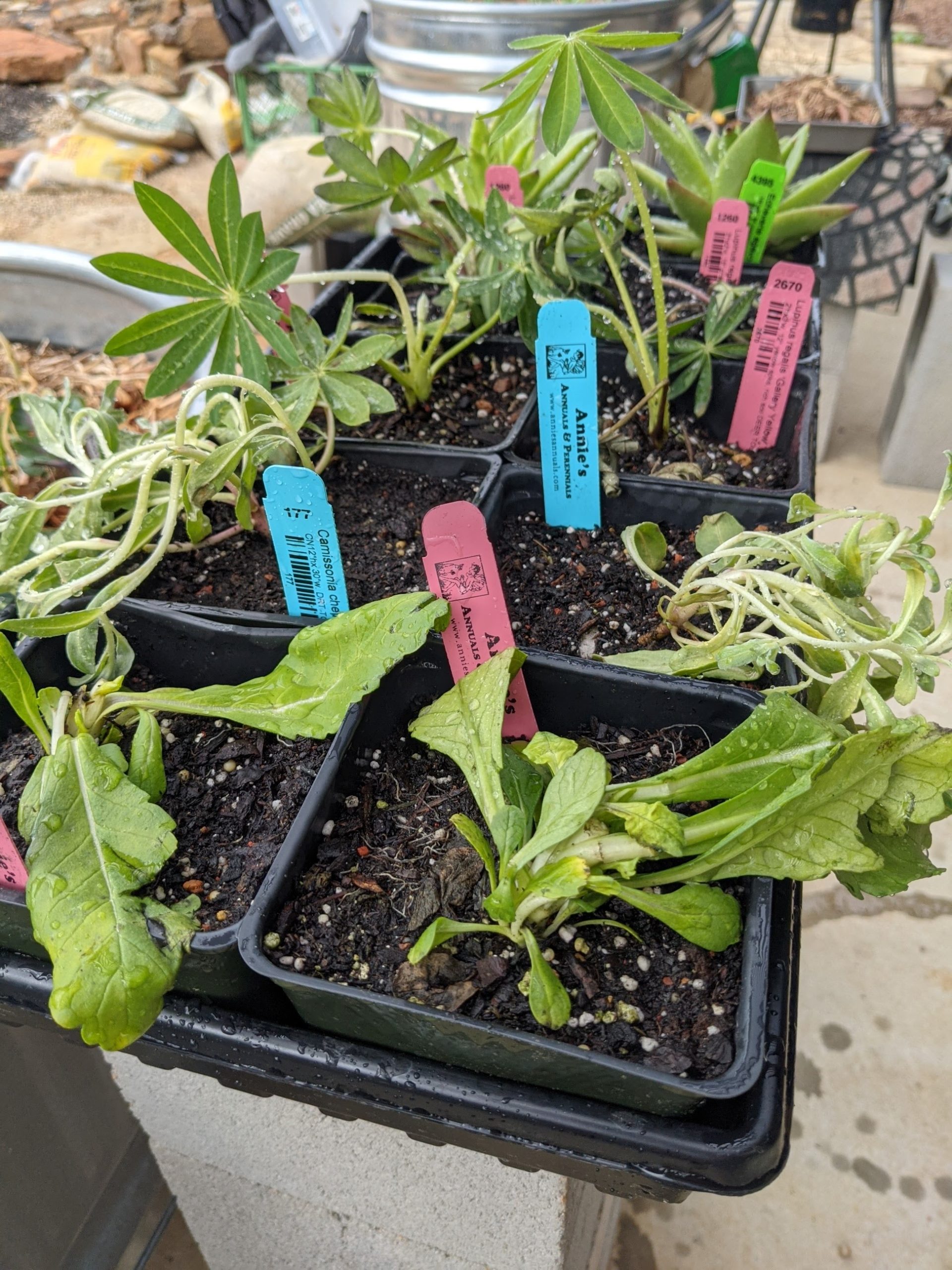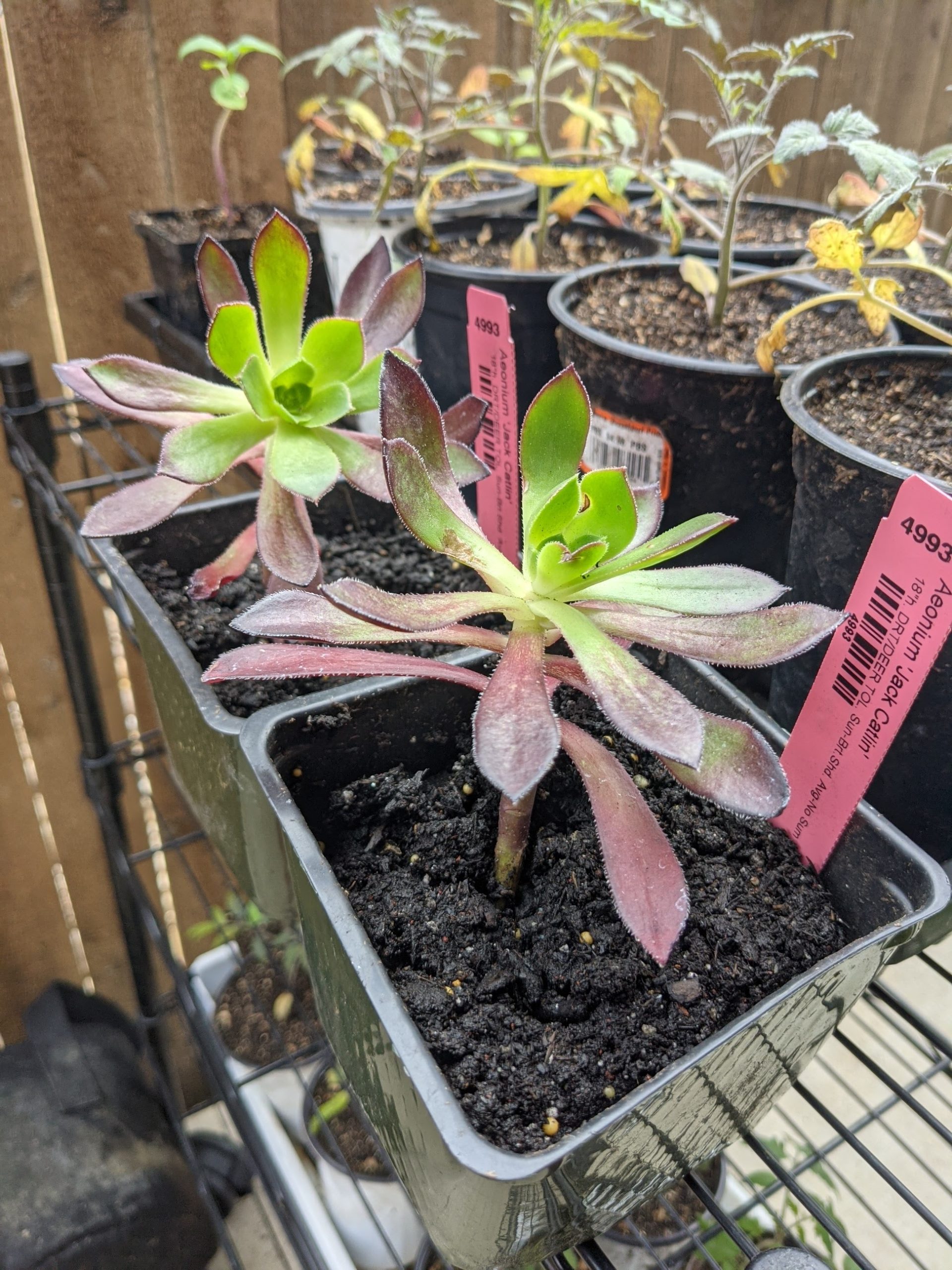My order from Annie’s Annuals finally arrived, nearly a week later than the promised delivery date. I should have known that carriers are still dealing with large backlogs and delayed delivery schedules.
The plants didn’t look too good after unpacking, despite the great packaging. I reported the issue to the vendor and Annie’s was kind enough to offer store credit.
Good news for my tomato starts; 15g grow bags have arrived. I plan to transplant them around the beginning of April, once I have acquired cages and come up with a soil mix recipe.























































